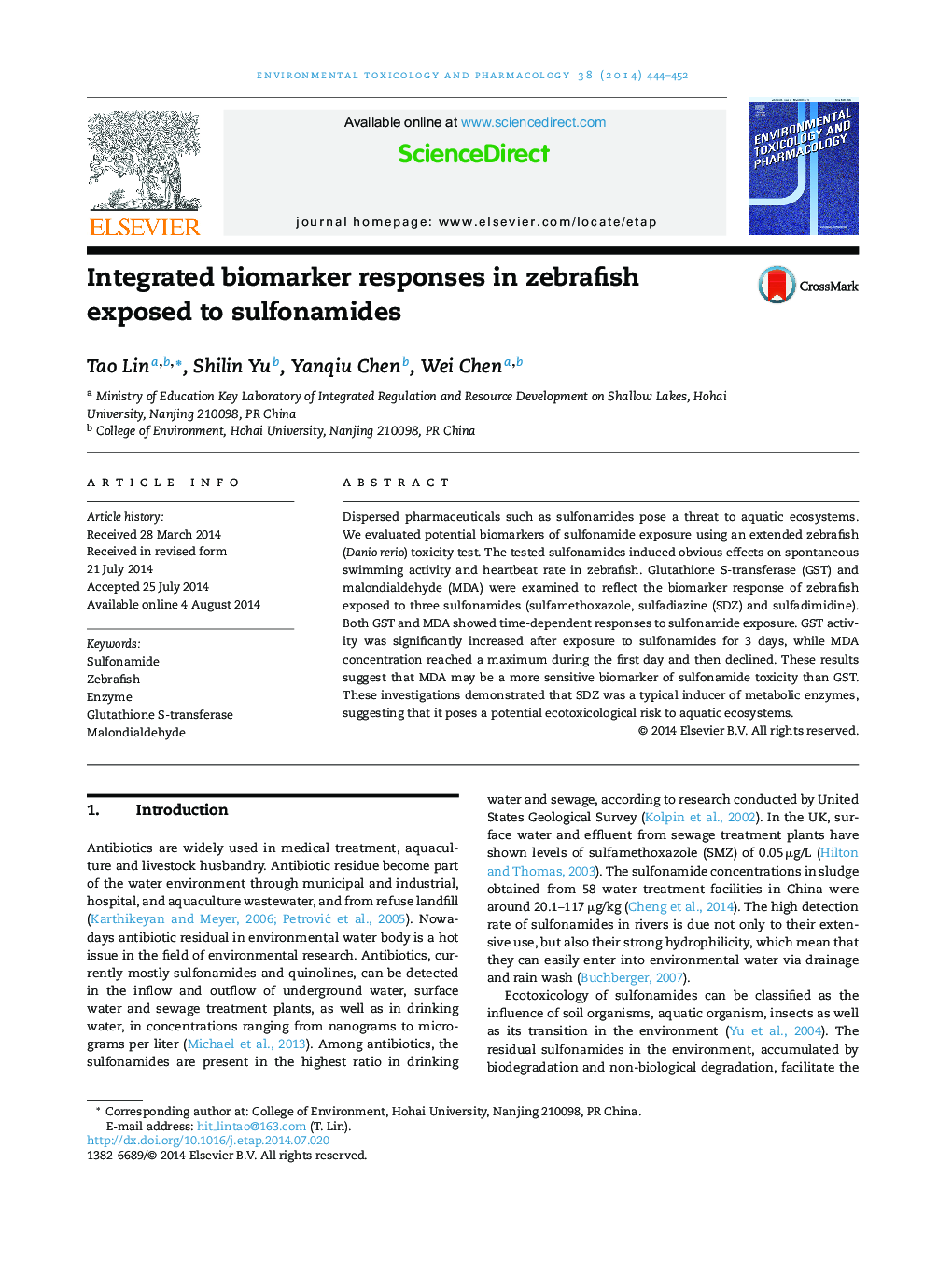| Article ID | Journal | Published Year | Pages | File Type |
|---|---|---|---|---|
| 2583603 | Environmental Toxicology and Pharmacology | 2014 | 9 Pages |
•Spontaneous swimming activity was negatively related with exposure concentration.•Heartbeat rate in zebrafish was positively associated with sulfonamide concentration.•Sulfonamides caused significant changes in enzyme activities of both GST and MDA.•GST and MDA could provide sensitive biomarkers of sulfonamide toxicity.
Dispersed pharmaceuticals such as sulfonamides pose a threat to aquatic ecosystems. We evaluated potential biomarkers of sulfonamide exposure using an extended zebrafish (Danio rerio) toxicity test. The tested sulfonamides induced obvious effects on spontaneous swimming activity and heartbeat rate in zebrafish. Glutathione S-transferase (GST) and malondialdehyde (MDA) were examined to reflect the biomarker response of zebrafish exposed to three sulfonamides (sulfamethoxazole, sulfadiazine (SDZ) and sulfadimidine). Both GST and MDA showed time-dependent responses to sulfonamide exposure. GST activity was significantly increased after exposure to sulfonamides for 3 days, while MDA concentration reached a maximum during the first day and then declined. These results suggest that MDA may be a more sensitive biomarker of sulfonamide toxicity than GST. These investigations demonstrated that SDZ was a typical inducer of metabolic enzymes, suggesting that it poses a potential ecotoxicological risk to aquatic ecosystems.
